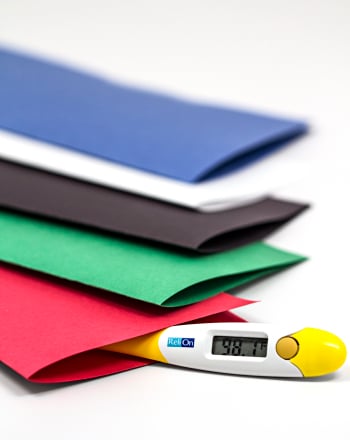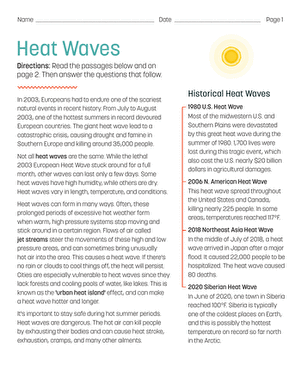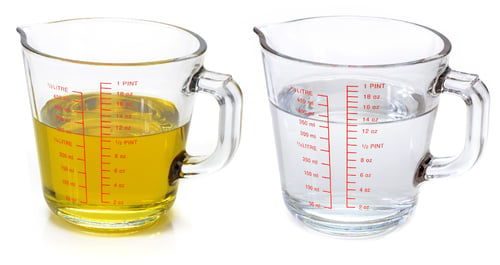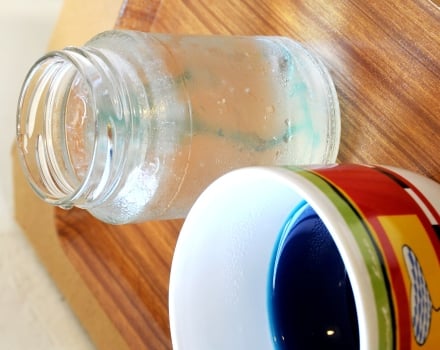Science project
Color and Heat Absorption
Difficulty of Project
Easy
Cost
$2 per student
Safety Issues
N/A
Material Availability
Easy; materials can be easily obtained
Approximate Time Required to Complete the Project (Including analysis and write-up)
6 hours
Objective
What is the project about?
The heat experiment is an activity in which students can test how different colors absorb heat differently.
What are the goals?
The goal of the heat experiment is for students to compare how much heat is absorbed by black paper versus white paper. Students should learn that dark colors absorb more light and heat than lighter colors. Students can even apply this concept to real world situations, such as what color shirt to wear on a hot summer day.
Materials and Equipment / Ingredients
What materials are required?
- Glass jar or cup (2 of the same type per student)
- Water
- Thermometer
- Rubber band (2 per student)
- Construction paper (1 sheet of white and 1 sheet of black per student)
- Cling wrap
Where can the materials be found?
Most materials can be found at an art store or all-purpose store (such as Target)
Introduction
Research Questions
- What is light absorbtion?
- What is light reflection?
- What colors are known to absorb heat more than others?
Terms, Concepts and Questions to Start Background Research
For the parent/student, what terms and concepts are required to better understand the project?
The concepts of absorption and reflection are essential.
Experimental Procedure
- First wrap the black construction paper around one of the glasses/jars and secure it in place with a rubber band.
- Next wrap the white construction paper around the second glass/jar and secure it in the same fashion with a rubber band. Fill both glasses approximately 3/4 full of water (they should have the same amount of water).
- Cover each jar with cling wrap and secure with a rubber band if necessary.
- Put both glasses in direct sunlight for 5 hours.
- Remove the glasses from sunlight and measure the temperature of the water in each glass.
Bibliography / References to related books / Links to related sites on the web
Charles R. Barman, John J. Rusch, Physical Science "Heat Absorption", Pages 260-261, Silver Burdett Company,1979.
Disclaimer and Safety Precautions
Education.com provides the Science Fair Project Ideas for informational purposes only. Education.com does not make any guarantee or representation regarding the Science Fair Project Ideas and is not responsible or liable for any loss or damage, directly or indirectly, caused by your use of such information. By accessing the Science Fair Project Ideas, you waive and renounce any claims against Education.com that arise thereof. In addition, your access to Education.com's website and Science Fair Project Ideas is covered by Education.com's Privacy Policy and site Terms of Use, which include limitations on Education.com's liability.
Warning is hereby given that not all Project Ideas are appropriate for all individuals or in all circumstances. Implementation of any Science Project Idea should be undertaken only in appropriate settings and with appropriate parental or other supervision. Reading and following the safety precautions of all materials used in a project is the sole responsibility of each individual. For further information, consult your state's handbook of Science Safety.
Education.com provides the Science Fair Project Ideas for informational purposes only. Education.com does not make any guarantee or representation regarding the Science Fair Project Ideas and is not responsible or liable for any loss or damage, directly or indirectly, caused by your use of such information. By accessing the Science Fair Project Ideas, you waive and renounce any claims against Education.com that arise thereof. In addition, your access to Education.com's website and Science Fair Project Ideas is covered by Education.com's Privacy Policy and site Terms of Use, which include limitations on Education.com's liability.
Warning is hereby given that not all Project Ideas are appropriate for all individuals or in all circumstances. Implementation of any Science Project Idea should be undertaken only in appropriate settings and with appropriate parental or other supervision. Reading and following the safety precautions of all materials used in a project is the sole responsibility of each individual. For further information, consult your state's handbook of Science Safety.













